In the fast-paced world of web development, a local dev server is like having a secret lair for superheroes. It’s where coding magic happens, bugs are squashed, and features are born—all without the fear of crashing the live site. Imagine tinkering away with your project in a cozy environment, free from the prying eyes of the internet. Sounds pretty great, right?
Table of Contents
ToggleOverview of Local Dev Server
A local development server creates a dedicated environment for developers to work on web projects. Developers gain full control over their applications through this server, allowing them to code and run tests without impacting a live website.
Setting up a local server significantly speeds up the development process. Changes can be applied instantly, enabling immediate feedback. Furthermore, developers can debug code without real-world repercussions, which simplifies error resolution.
Different options for local development servers exist, including XAMPP, WAMP, and Docker. Each platform offers unique features tailored to specific development needs. For example, Docker allows developers to containerize applications, ensuring consistent environments across different machines.
The local server also enhances collaboration among team members. Multiple developers can share their progress easily, enabling effective communication. By using version control systems, teams can synergize their development efforts, streamlining project management.
Testing functionalities becomes more efficient through local servers. Developers can simulate different environments, ensuring applications perform well under various conditions. This testing phase dramatically reduces the likelihood of issues present in production environments, saving time and resources.
Integrated development environments (IDEs) often support local server configurations. These tools simplify the setup process, allowing developers to focus more on coding. With the right tools in place, developers can create high-quality applications ready for deployment.
Benefits of Using a Local Dev Server
Local development servers offer significant advantages for web developers. They provide a secure environment for coding and testing without impacting live sites.
Faster Development Cycles
Speed is crucial in development, and local servers expedite this process. Developers experience instant feedback with every code change. Upon saving modifications, they can quickly see results without the delays that often occur on live servers. This immediacy encourages experimentation, as reverting changes or troubleshooting becomes hassle-free. The streamlined workflow allows developers to focus on building features rather than managing deployment issues. Enhancing collaboration, teams benefit from synchronized efforts in less time, ensuring projects progress without bottlenecks.
Improved Testing Capabilities
Testing on local servers allows for comprehensive assessments. Developers can replicate different environments to identify issues prior to deployment. Simulation of various conditions ensures applications maintain performance across platforms, reducing surprises in production. Error detection becomes simpler in an isolated setup, enabling detailed examination without affecting users. By facilitating thorough testing, local servers increase application reliability. They also foster better quality assurance practices, ultimately leading to more robust and user-friendly applications.
Popular Local Dev Server Options
Several local development server options cater to varying needs, providing developers with robust environments for their projects.
XAMPP
XAMPP serves as a widely used open-source solution for creating local servers. This platform includes Apache, MySQL, PHP, and Perl, allowing users to run multiple scripts in a single environment. It’s easy to install and configure, catering to both beginners and advanced developers. The portability feature enables users to carry XAMPP on USB drives, facilitating development anywhere. Users appreciate the intuitive control panel that simplifies managing components and monitoring server activities. XAMPP’s flexible setup encourages rapid testing and development cycles, making it a popular choice for web developers.
MAMP
MAMP stands out as a robust local server option typically used by Mac users, although a Windows version exists. MAMP easily manages both Apache and Nginx servers, making it a versatile choice. The one-click installation simplifies setup, saving time for developers. Users benefit from the ability to switch between PHP versions, ensuring compatibility with various projects. The built-in tools aid database management, streamlining workflows for users. MAMP PRO enhances the experience, offering advanced features like host management and dynamic DNS support, elevating MAMP’s functionality.
Local by Flywheel
Local by Flywheel focuses on WordPress development, providing an intuitive interface. This platform enables developers to create, manage, and share WordPress sites effortlessly. One-click site setups make initiating new projects quick and efficient. Features like SSL support and live links enhance collaboration among team members. Users enjoy the ability to customize environments to match specific project requirements. Local’s integration with various development tools further streamlines workflows, making it a favorite for WordPress developers seeking simplicity and high productivity.
Setting Up Your Local Dev Server
Setting up a local development server involves understanding system requirements and following specific installation steps. This process lays the groundwork for efficient web development and testing.
System Requirements
Most local development servers require specific system specifications. Check for at least 4 GB of RAM, as this ensures smooth operation during tasks. A modern processor speeds up the performance while running development applications. Sufficient disk space is essential; at least 10 GB allows for multiple projects and associated tools. Operating system compatibility influences server options: macOS, Windows, and Linux users can select suitable software accordingly. Network connectivity plays a role in local server functionality, so a stable internet connection aids in troubleshooting and downloading necessary resources.
Installation Steps
Installation steps vary slightly depending on the chosen local server software. For XAMPP, download the installer from the official site and follow on-screen prompts to complete the setup. MAMP users can obtain the package and drag it into the Applications folder on macOS. Local by Flywheel offers an intuitive process; users simply download and install the application, following the provided setup guide. Configuring settings and components after installation ensures that everything functions properly. Always restart the server after making changes to see the effects immediately. Testing your setup through a simple project confirms that the local server operates correctly.
Conclusion
Embracing a local development server transforms the way developers approach their projects. It fosters a secure environment for experimentation and innovation while minimizing risks associated with live deployments. With tools like XAMPP, MAMP, and Local by Flywheel, developers can easily set up and customize their workflows to suit their needs.
The benefits extend beyond individual projects. Improved collaboration and testing capabilities pave the way for more efficient development cycles. By leveraging local servers, teams can ensure their applications are robust and user-friendly before they go live. This practice not only enhances productivity but also leads to higher quality outcomes in web development.








